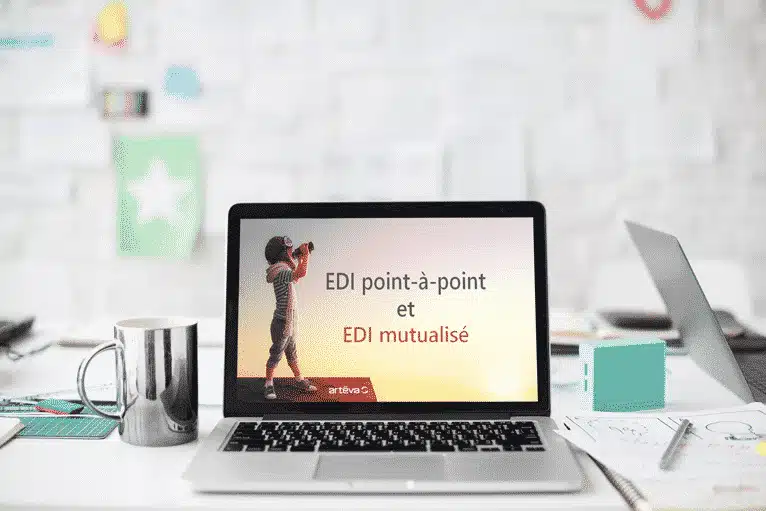Shared EDI platform and point-to-point
Both types of IDE are available in SaaS mode. By choosing SaaS, your outsourced EDI platform is hosted and managed by your EDI partner.
Point-to-point EDI platform

Point-to-point EDI, also known as EDI Direct, has been used by companies for many years.
The great feature of direct EDI is that your company communicates individually, through separate flows, with each of its business partners (customers, suppliers,…).
The implementation and maintenance of point-to-point flows require specific developments and tests for each flow, right up to the end of the chain. The same applies to communication protocols (AS2, FTP, FTPS,…) which must be appropriate to each partner’s expectations. The mapping stage is therefore essential.
Point-to-point EDI mode may be limited when you are trading with a large number of business partners. It can involve the individual management of hundreds or even thousands of different connections. This can become very complex and involve many resources, and the evolution of a flow can be very costly.
Shared EDI platform

The shared EDI service in SaaS mode is much newer. With shared EDI, the connection of an interface from your information system to the shared platform of your EDI provider is to be developed once, regardless of the number of partners involved.
The digital platform supports the connection between the platform and the interfaces of each partner. To do this, the EDI platform uses pivot business objects common to all connected actors.
Existing connections are shared and do not need to be redeveloped as part of a new project. This results in financial savings and a real responsiveness to implementation. If the EDI platform of one of your partners is not already connected to the platform of your EDI provider, your provider will be able to take over the development and offer it as a shared service to all stakeholders.
However, the architecture of the digital platform of the EDI provider must have a latest generation profile and know how to manage shared pivoted business objects.
Shared EDI, and then…
The offers are evolving and we are moving more and more towards the development of open platforms, with a decompartmentalization of business processes.
These platforms do not replace EDI but integrate it to connect with the relevant partners. They allow to optimize and automate the business processes of a company while associating its ecosystem.
EDI is therefore a channel to address certain profiles of partners and remains essential when a large volume is at stake. However, relevant alternatives to EDI such as APIs and collaborative portals are increasingly being developed.
Indeed, from our point of view, to optimize exchanges with its entire ecosystem, we will no longer be able to limit ourselves to EDI in the future: we must go further.



